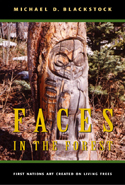In 2010, Ecotrust Canada and the Union of BC Indian Chiefs co-published the book Living Proof – The Essential Data Collection Guide for Indigenous Use and Occupancy Map Surveys. This book was heralded as a major contribution to Canada, “proof on the ground” for aboriginal tradition and rights. There is a growing sense that in order to protect Indigenous knowledge, it must be recorded properly and used to create a resource that will improve social, economic and environmental outcomes for Aboriginal people. Living Proof is a guide to creating such resources and provides both storytelling and practical step by step lessons on how to use and apply digital technology to record and create maps and knowledge about land use and occupancy by aboriginal communities.
Feedback on book from community. http://ecotrust.ca/living-proof-praised-major-contribution-march-25-event/
Living Proof The Essential Data-Collection Guide for Indigenous Use-and-Occupancy Map Surveys (A review). Available via UBC library
